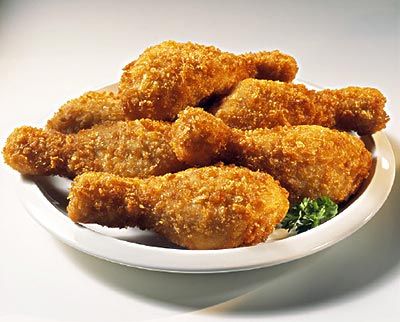For expectant mothers in the third trimester, although they cannot lose weight, they must control their weight. Otherwise, besides body deformation, they can easily lead to production difficulties. However, the existence of some misunderstandings may have adverse effects on pregnant mothers. The following four misunderstandings must be avoided after the expectant mothers who are about to produce.

Misunderstanding 1: The staple food is high in calories and easy to eat fat
This view has been deeply rooted in people's minds, but this is not the case. One gram of fat produces 9 kcal of calories, and 1 gram of carbohydrate and 1 gram of protein produce 4 kcal of calories, respectively. The staple food is mainly carbohydrates, so it is not reasonable to say that the calorie content of the staple food is high.
In fact, many staple foods are not only low in calories but also provide satiety, which in turn helps control weight, such as oats, red beans, buckwheat, and black rice. However, some high-calorie foods are often neglected. For example, the heat of a chicken's wings is equivalent to three-two-meter rice, and drinking a 600-ml beer is equivalent to eating two or two steamed buns.
Myth 2: Eat more coarse grains than fine grain
Especially in the third trimester of pregnancy, many expectant mothers will encounter convulsions. For certain dietary fiber intake, mothers will choose coarse grains, and experts recommend that they should be carefully matched during pregnancy. However, this does not mean that it is better to eat whole grains than fine grains.
The essence of eating staple food lies in the thickness, such as adding some millet and red beans to steamed rice, and cooking white rice porridge and adding oats. However, if you eat too much coarse grains, it will affect digestion, increase the burden on the stomach and intestines, cause abdominal distension, indigestion and other problems. The long-term large-scale consumption will also affect the body's absorption of calcium, iron and other minerals and reduce human immunity.
Therefore, it is best for healthy adults to eat only 50-100 grams of coarse grains per day, accounting for about 1/3 of the total amount of staple foods. For pregnant mothers with weak functions of digestion and absorption, they should appropriately eat less coarse grains, and promote digestion and absorption through porridge boiled with soft glutinous, coarse grains, flour, and water.
Myth 3: The staple food only includes cereals and beans
This view is somewhat partial. In a broad sense, staple food refers to food, including all ingredients such as rice, noodles, grains, and potatoes. Therefore, after eating starchy foods such as potatoes, sweet potatoes, and squash, it is necessary to appropriately reduce the amount of other staple foods. Because these foods contain more calories than ordinary fruits and vegetables, long-term consumption of large quantities without reducing the weight of the staple food can lead to obesity.
What needs to be reminded is that such ingredients should not be fried when cooking, on the one hand, they can reduce the production of carcinogens, and on the other hand they can also control the intake of calories.
Misunderstanding 4: Dinner is best not to eat staple food
"Eat does not eat staple food, only eat fruits and vegetables." This is a misunderstanding that has been circulating for a long time. According to a survey, more than 60% of women consume insufficient staple foods every day to control their weight. In fact, dinner does not eat staple food, not only can not control weight, but will lose health.
If the human body's carbohydrate supply is insufficient, tissue protein and fat will be used to solve the problem. The decomposition of tissue protein will affect the function of the organs. A lot of fat will be oxidized and ketone bodies will be produced, leading to ketosis and even ketoacidosis.
Studies have shown that people with less staple foods will have higher levels of bad cholesterol, a greater risk of heart disease, and even memory problems. The Chinese Nutrition Society recommends that people should keep an appropriate daily intake of cereals. The average daily intake of adults is 250-400 grams.
Healthy food that can't be eaten late in pregnancy
Controlling weight during the third trimester is also essential to a healthy diet. Pregnant mothers should not stop eating because of fear of excess nutrition, because in the third trimester of pregnancy, the fetus grows faster, there are many nutrients to be stored, this time the animal protein, vitamins can not be missing, not only beneficial to the growth of the fetus , but also to prepare for postpartum breastfeeding. However, due to the oppression of the stomach, the amount of food consumed at each meal should be reduced and the number of meals should be increased.
4-5 times to avoid lack of nutrition.
The deeper the color of green leafy vegetables often means that the higher the vitamin content. So pregnant mothers may wish to add some fresh vegetables in the soup or dumpling stuffing, like cabbage is a good choice.
Marine foods Marine foods are known by nutritionists as high-value nutrients. They are rich in fats, proteins, vitamins, minerals and other nutrients that can promote fetal growth and development.
Soybean products Soybean products are indispensable health foods during pregnancy and can provide high quality vegetable protein and other nutrients for pregnant mothers.
Low-fat yogurt yogurt is rich in calcium and protein, easy to absorb, helps pregnant mother's gastrointestinal tract to maintain a healthy state.
Anesthesia Medical Co., Ltd. , https://www.sinoanesthesia.com